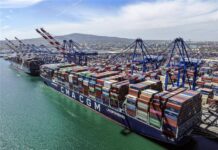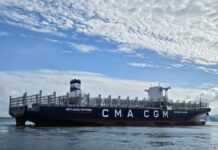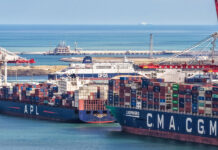Climate change is increasingly opening up the Northwest Passage, an Arctic sea route north of the Canadian mainland.
Could it herald an era of more cargo shipping around the top of the world?
Back in the 19th Century there was a race to map and navigate the Northwest Passage through the Arctic Ocean as a shortcut between the North Atlantic and North Pacific.
Explorers would take ships up Greenland’s west coast, then try to weave through Canada’s Arctic islands, before going down the Bering Strait between Alaska and Russia.
The problem was that even in the summer the route was mostly blocked by impenetrable ice. On one of the best-known expeditions – that of the UK’s Sir John Franklin in 1845 – all 129 crew members perished after their two vessels got stuck.
Today, more than 170 years later, a warming Arctic means that the route is increasingly accessible for a few months each summer.
And according to some estimates, Arctic ice is retreating to the extent that the Northwest Passage could become an economically viable shipping route.
For shipping firms transporting goods from China or Japan to Europe or the east coast of the US, the passage would cut thousands of miles off journeys that currently go via the Panama or Suez canals.
Read more on BBC News.





